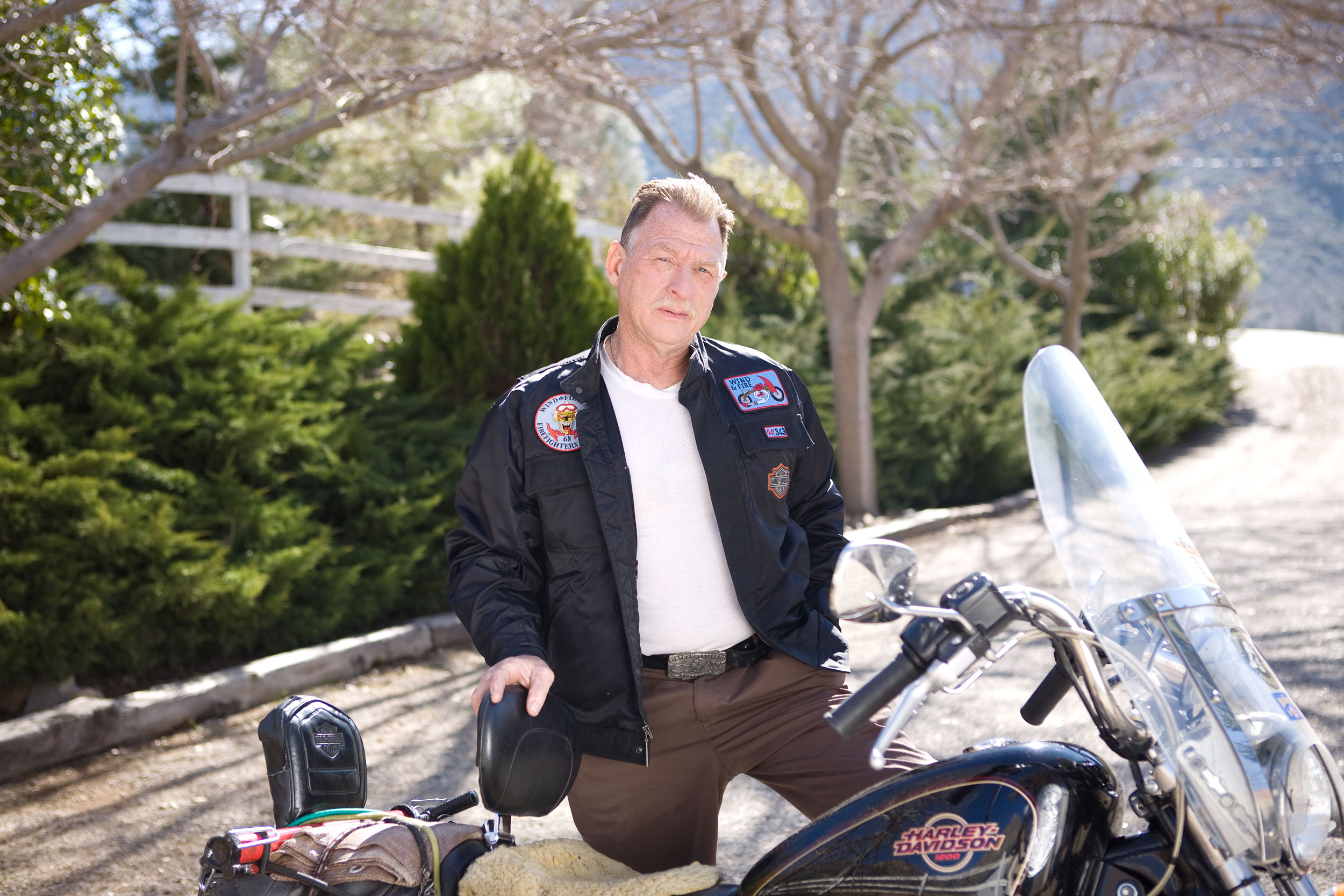American Motorcyclist February 2018
Hall Of Famer: Dave Barr
Pushing Limits

Dave Barr, a professional soldier until a landmine explosion ended his military career, went on to set the standard for long-distance motorcycle riding with a series of epic journeys that established him as an icon of the human spirit’s capacity to overcome physical adversity.
Despite the loss of his legs, he has ridden around the world, across Russia in the dead of a Siberian winter, and to the four farthest points of Australia, all aboard Harley-Davidson motorcycles. In the process, Barr has written books, produced documentaries, earned two Guinness World Records, and established a foundation to support a charity that assists disabled people.
Barr was born April 12, 1952, in Los Angeles, Calif., and was abandoned in the backseat of a car. After nine months in foster care, he was adopted by Guy Barr, a Navy veteran of World War II in the Pacific, and his wife, Lucille, who had worked in an aircraft assembly plant during the war. He bought his first motorcycle, a ’61 Harley-Davidson, after he returned in 1971 from Vietnam, where he had earned 57 air medals, including a single-mission decoration for valor during his combat tour as a U.S. Marine Corps helicopter gunner.
He rode the panhead coast-to-coast-to-coast and then bought his second bike, a 1972 Harley-Davidson FX Super Glide.
While serving in the South African army in Angola a decade later, Barr’s unarmored vehicle rolled over an anti-tank mine and exploded. He spent nine months in a Pretoria military hospital, undergoing 20 operations, including four to remove his legs in stages, skin grafts, and agonizing physical therapy to learn to walk again. When he was released from the hospital, Barr volunteered to go back to the combat zone where he’d nearly been killed to finish his enlistment on prosthetic legs.
Barr mustered out in December 1982 and returned to his family home in West Covina, Calif. He took the Super Glide out of storage and refit it to accommodate his prosthetics. He added an electric starter and an overload spring to the brake pedal so he could ride with his artificial right foot resting on it. On his first ride, a casual thought occurred to him, and it put his life on a new course that would take him around the world and to some of its most extreme and challenging environments.
In his first book, Riding the Edge, he described it this way: “Wouldn’t it be something to share this simple accomplishment of riding a motorcycle as a double amputee with disabled people the world over? Perhaps I could be a role model for those people who might someday suffer the loss of good health.”
Seven years later, he piloted the Super Glide out of Johannesburg, South Africa, on a 9,000-mile transcontinental ride to raise funds for the Leonard Cheshire Foundation, an international charity that assists disabled people. In September 1990, nine months after completing the Africa ride, Barr again left Johannesburg on the 18-year-old shovelhead, turned north and kept going. Riding six of the world’s continents—he couldn’t find a way to get the bike to Antarctica—Barr logged 83,000 miles through the world’s most dangerous and unforgiving regions during the 3½-year trip.
After enduring virtually indescribable physical and emotional hardship, overcoming mechanical failures, and plowing through thousands of miles of red tape that dozens of governments had wrapped around the ride, Barr made it home in May 1994.
Barr retired the Super Glide with a quarter of a million miles on the odometer in 1996, the same year he set out from Le Conquet, on France’s Atlantic coast, aboard a 1996 Harley-Davidson Sportster 883 equipped with a sidecar. Almost four months after leaving France, Barr arrived at the Pacific port city of Vladivostock, Russia, 9,375 miles east of his starting point. Much of the ride, which was undertaken in winter because the route was plotted to cross hundreds of miles of Russian marshland that could be traversed only when frozen, was made above the Arctic Circle.
At the easternmost point, Byron Bay, park rangers refused Barr permission to ride to the water’s edge but allowed him to roll the Sportster down 60 stairs to the Pacific Ocean. At Wilsons Promontory State Park, Barr’s southernmost goal, park personnel refused to allow Barr even to roll the bike to the water, but he kept his record bid in place by unbolting the front wheel and lugging the 32-pound assembly three kilometers down a slippery, bare-rock cliff to the Bass Strait.
“If you’re not willing to take risks, you’re going nowhere,” Barr told an interviewer in 2003. “I took [the disabilities] and used them to give my life meaning so that maybe someday someone will be able to say, ‘I met Dave Barr, and if he did all of these things as he is, then surely I can live my life normally.’”
Barr was inducted into the AMA Motorcycle Hall of Fame in 2000.
